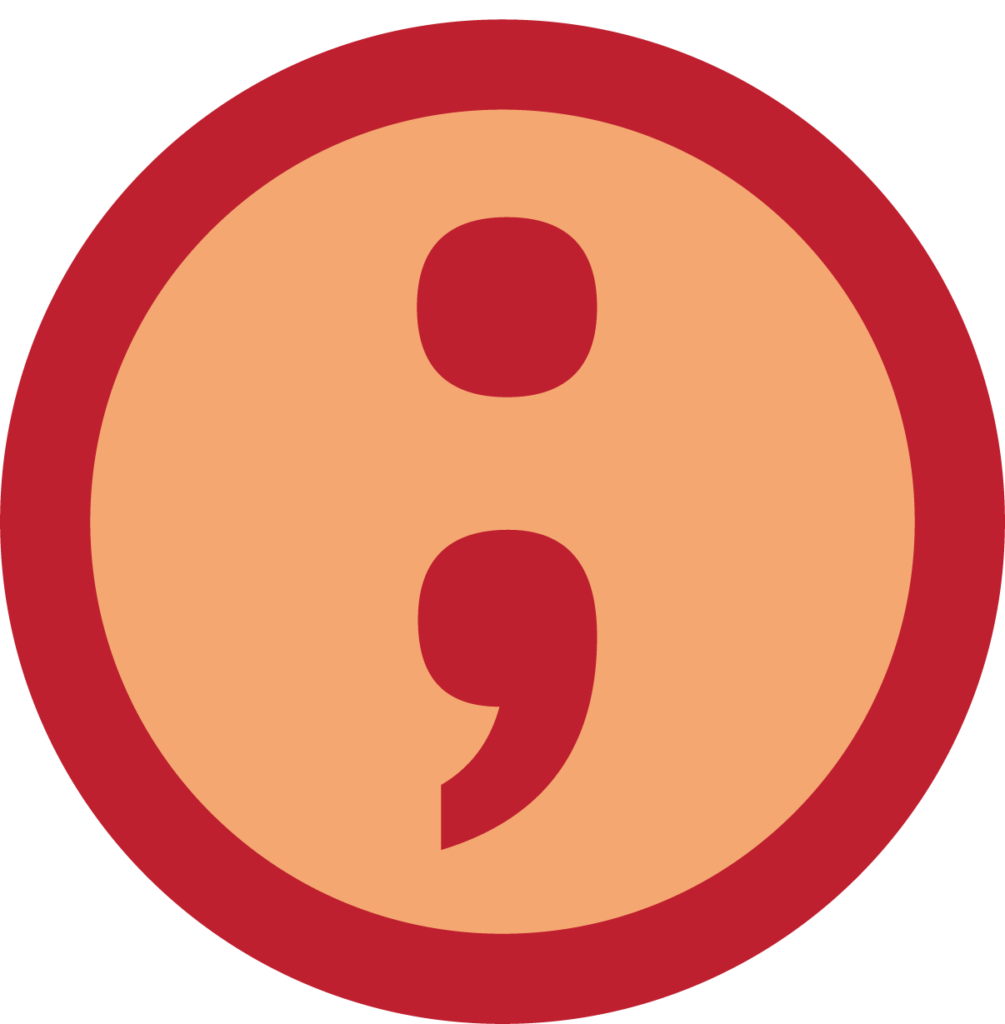 [If you don’t know why the abbreviation TL;DR is ironic on a page about semicolons, you should read this page. Trust us that the material won’t be too long, and you’ll be glad you did read it.]
[If you don’t know why the abbreviation TL;DR is ironic on a page about semicolons, you should read this page. Trust us that the material won’t be too long, and you’ll be glad you did read it.]
The semicolon is one of the most misunderstood and misused punctuation marks; in fact, it is often mistaken for the colon, which we’ll discuss next. However, these two punctuation marks are not interchangeable. A semicolon connects two complete ideas (a complete idea has a subject and a verb) that are related conceptually to each other. Look at this sentence, for example:
Robinson’s statue is presently displayed in the center of the exhibit; this location makes it a focal point and allows it to direct the flow of museum visitors.
The first idea tells us where Robinson’s statue is, and the second idea tells us more about the location and its importance. Each of these ideas could be its own sentence, but by using a semicolon, the author is telling the reader that the two ideas are closely related. You might have been in the habit of putting a comma in the place of the semicolon if you’ve wanted to signal a close relationship but haven’t felt confident about semicolons; that habit is grammatically unconventional in standardized English. Using a comma that way creates a comma splice, which we’ll also discuss later in this module.
Key Takeaways
Remember: a comma can join a complete idea to other items while a semicolon needs to connect a grammatically complete idea on either side.
The semicolon can also be used to separate items in a list when those items have internal commas:
- As a photographer for National Geographic, Renato had been to a lot of different places including São Paulo, Brazil; Kobe, Japan; Kyiv, Ukraine; and Barcelona, Spain.
- As an engineering assistant, I had a variety of duties: participating in pressure ventilation surveys; completing daily drafting, surveying, and data compilation; and acting as a company representative during a roof-bolt pull test.
Practice
Do the following sentences need a comma or a semicolon?
- Kieran never throws anything away __ he’s convinced he’ll need these things someday.
- Because I left my keys at my apartment __ I had to stay on campus and wait for my roommate.
- Zebras are the most popular animals at my local zoo __ however __ elephants are my favorite animal.
- The company had four primary locations: Boston, Massachusetts __ San Antonio, Texas __ Chicago, Illinois __ and Little Rock, Arkansas.
